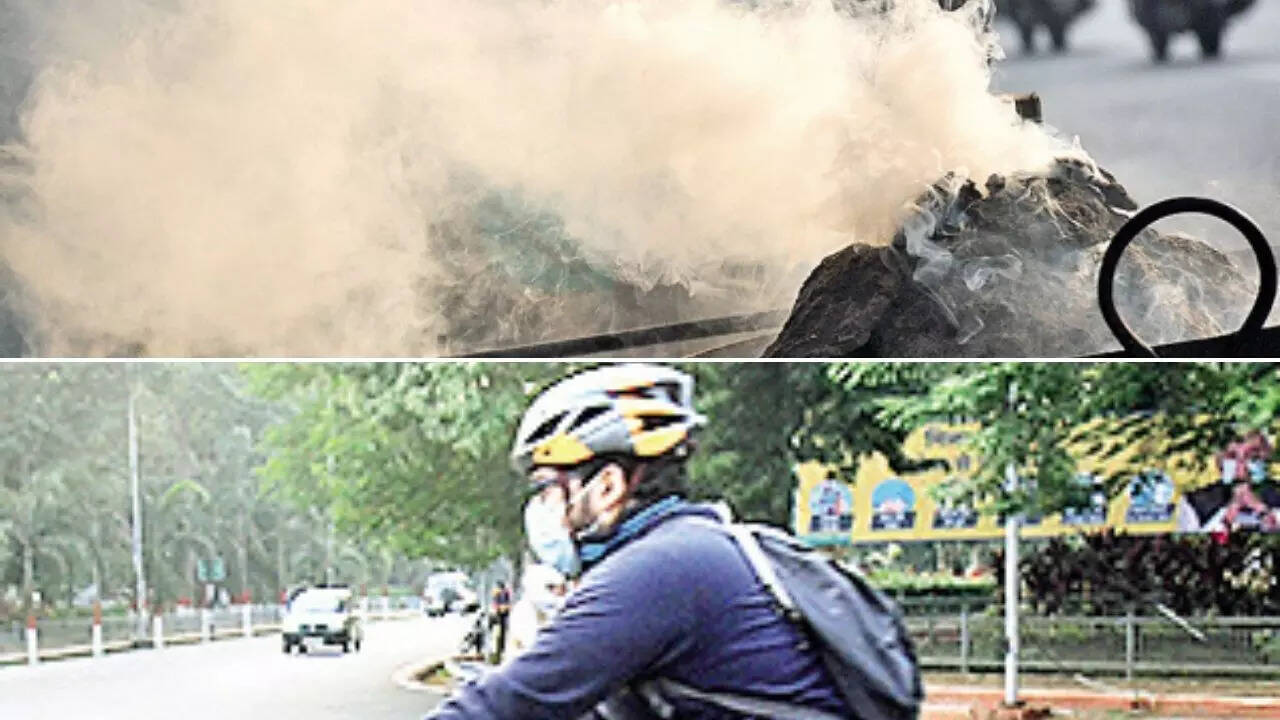
PATNA: The city air quality turned ‘poor’ on Tuesday and is likely to deteriorate further with the fall in temperature and calm wind. The air quality index (AQI) in Patna at 4pm was 242, considered ‘poor’ as per the Central Pollution Control Board (CPCB) bulletin.
The environmentalists assert that the air pollution, mainly PM2.5 (particulate matter less than 2.5microns) and PM10 (particulate matter less than 10microns), increases during this period of the year with fall in temperature and wind speed and rise in anthropogenic activities.
Track the pollution level in your city
The Air Quality Early Warning System of the ministry of earth sciences has predicted further rise in pollutants in the air due to climatic reasons.
The Bihar State Pollution Control Board (BSPCB) officials stated that the overall AQI of 242 for Patna was the average of AQI level at BIT-Mesra, Patna (318), Eco Park (303), SK Memorial Hall (286), DRM office-Khagaul (164) and Patna City (142).
An AQI is considered good if it is between zero and 50, ‘poor’ between 201 and 300, ‘very poor’ between 301 and 400 and ‘severe’ in case of being in 401-500 range. A ‘poor’ AQI essentially means that people may suffer from breathing discomfort on prolonged exposure to such air.
BSPCB chairman Ashok Ghosh said wind velocity and its direction, weather conditions, anthropogenic activities and local conditions of adjoining areas (vehicular movement, construction work) decide the pollution level of the particular air monitoring station area. “That’s why the AQI level of some areas are more than the others. Besides, the temperature has started falling by 2-3 degrees Celsius with the onset of winter,” he told this newspaper.
“Due to weather transition, there is formation of thermal inversion (soil is cooler than the air) in the atmosphere, which has lowered the vertical wind movement causing very low dispersion of pollutants, especially particulate matters,” he added.
Several studies have found that states across the Indo-Gangetic plain, including Bihar, endure maximum exposure to particulate matters, because of its geographical area. To curb the pollutants in the air, the pollution board has decided to take measures to control different sources of the pollution, including open construction work and movement of open construction materials, conversion of brick kiln into zigzag setting and biomedical waste management.
Ghosh said the BSPCB will send letters to all the district magistrates to ensure that screens are used in construction activities and materials be covered during transportation. “During winter, the construction activities increase but no one use the screens which lead to rise in PM2.5 level. We will impose environmental compensation (EC) on those who violate the norms. The National Green Tribunal (NGT) has given the rights to the boards to impose EC on violation of the norms. So, we will strictly implement this,” he said.
“As far as the brick kilns are concerned, almost 5,000 of them have been converted into green technology. No other state has achieved this feat. The remaining kilns will be converted soon. We are also promoting fly ash and the state government has also announced that all the government buildings will be built by using it. Fly ash, the remains of coal, is the problem for thermal power. So it has decided that these ashes will be sued to make bricks for use in building construction,” Ghosh said.







